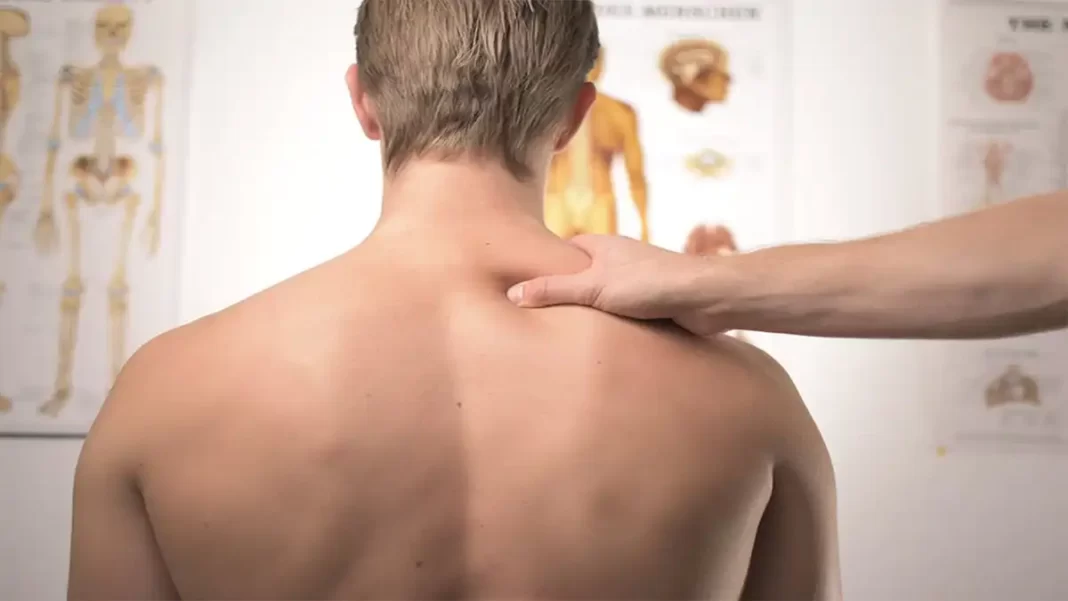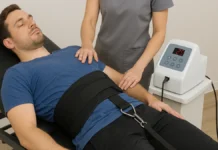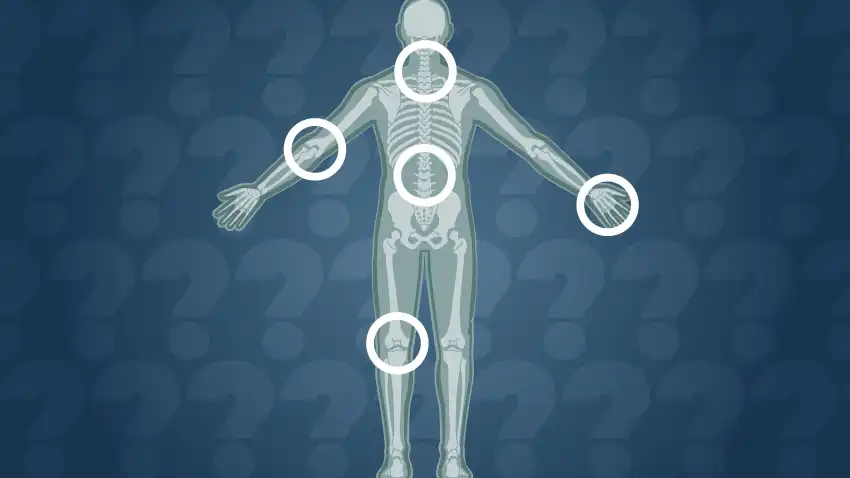“IF YOU LISTEN TO THE BODY IT WILL TELL YOU EVERYTHING YOU NEED TO KNOW!” ” L. H. JONES D.O.
- Positional Release Therapy (TRP), also known as Strain-Counterstrain (tension, counter-tension), is a therapeutic technique that uses a comfortable position of the body, its appendages and tissues to resolve dysfunction somatic.
- Somatic dysfunction is defined as a disturbance of the sensory or proprioceptive system that results in facilitation and inhibition of vertebral segmental tissue (Korr 1975).
- .Jones (1973) proposed that due to somatic dysfunction, tissue often twists or knots, causing pain, spasms, and loss of range of motion.
- Simply, the TRP loosens the tissue as one would with a knotted collar, gently twisting and pushing the tissue to release tension from the knot.
- When one link in the chain is not twisted, others unravel nearby, providing profound pain relief (Speicher and Draper 2006a).
- In essence, TRP is the opposite of stretching.
- For example, if a patient has a tense area in the calf, the clinician traditionally dorsiflexes the foot to stretch the calf to reduce tension and pain.
- Unfortunately, this could lead to muscle protection and increased pain.
- Using the same example, a clinician using TRP would place the foot in the most comfortable position (plantar flexion), shortening the muscle or tissue in order to relax them.
- In the early 1950s, Dr. Lawrence Jones, an osteopathic physician, founded this approach; he first called it the positional release technique and then coined the term Strain-Counterstrain (Jones 1964).
A discovery by accident
- Jones described his clinical discovery as “a lucky accident and nothing more” (Jones, Kusunose and Goering 1995, 2).
- Jones had difficulty helping patient with severe back pain
- His biggest challenge was to sleep at night and if he could find a comfortable position he could gain relief.
- Jones recalled that he had helped a patient who was also having difficulty sleeping, and that the fetal position offered him great comfort.
- He left it there while he examined another patient.
- Upon return, the patient presented painlessly for the first time in four months.
Jones did not understand how placing a patient in a comfortable position for a short period of time could bring a complete stop to the relentless pain after the failure of so many traditional therapies.
- Three years later, he accidentally discovered that treating anterior pelvic points often relieved posterior pelvic pain.
- Based on this observation, Jones believed that the trigger points were the result of a counter-tension mechanism: if one tissue is sharply stretched, the opposing (antagonistic) tissue is counter-strained in its attempt to stabilize itself against the tensile force, resulting in the production of antagonistic trigger points that prevent the tissue strained by the agonist from fully healing (Jones 1995).
- Trigger points, unlike myofascial trigger points, are not associated with hyperirritable bands of tissue, but are discrete areas of tissue tenderness that can occur anywhere in the body (Speicher and Draper 2006a).
- Myofascial trigger points are hyperirritable nodules of knotted muscle tissue that often trap local nerves and vessels and cause pain, inflammation and loss of function (Simons and Travell 1981).
- Myofascial trigger points, whether active or latent, are found in tight bands of muscle tissue.
- An active myofascial trigger point produces local or referred pain or other alterations in sensory perception with or without manual stimulation, whereas a latent trigger point requires manual stimulation to activate potential pain or a sensory response (Dommerholt , Bron and Franssen 2006).
- Trigger points can also be active or latent, but they are usually not present in knotted muscles. Jones mapped the locations of TPs based on segmental levels of the spine, but the locations of the TPs have also been closely associated with the locations of myofascial trigger points first described by Travell in 1949.
- Myofascial trigger points and possibly trigger points may also be associated with ahi shi acupuncture points used for the treatment of pain (Hong 2000) as well as lymphatic reflex points (D’Ambrogio and Roth 1997).
- Melzack, Stillwell, and Fox (1977) asserted that there was not much difference between the locations of myofascial trigger points and acupuncture points based on their finding of a 71% correlation.
Référence
- Aguilera, F., Martín, D.P., Masanet, R.A., Botella, A.C.,Soler, L.B., and Morell, F.B. 2009. Immediate effect of ultrasound and ischemic compression techniques for the treatment of trapezius latent myofascial trigger points in healthy subjects: A randomized controlled study. Journal of Manipulative and Physiological Therapeutics 32 (7): 515–520.
- Brandt, B., and Jones, L.H. 1976. Some methods of applying counterstrain. Journal of the American Osteopathic Association 75 (9): 786–789.
- Busch, V., Magerl, W., Kern, U., Haas, J., Hajak, G., and Eichhammer, P. 2012. The effect of deep and slow breathing on pain perception, autonomic activity, and mood processing: An experimental study. Pain Medicine 13 (2): 215–228.
- Chaitow, L. 2002. Positional release techniques. London: Elsevier Health Sciences.
- D’Ambrogio, K.J., and Roth, G.B. 1997. Positional release therapy: Assessment & treatment of musculoskeletal dysfunction. St. Louis: Mosby.
- Deig, D. 2001. Positional release technique. Woburn, MA:
- Butterworth Heinemann. Delaney, G.A., and McKee, A.C. 1993. Inter-and intra-rater reliability of the pressure threshold meter in measurement of myofascial trigger point sensitivity. American Journal of Physical Medicine & Rehabilitation 72 (3): 136–139.
- Dommerholt, J., Bron, C., and Franssen, J. 2006. Myofascial trigger points: An evidence-informed review. Journal of Manual & Manipulative Therapy 14 (4): 203–221.
Gemmell, H., Miller, P., and Nordstrom, H. 2008. Immediate effect of ischaemic compression and trigger point pressure release on neck pain and upper trapezius trigger
points: A randomised controlled trial. Clinical Chiropractic 11 (1): 30–36. - Gerwin, R.D., Dommerholt, J., 2002. Treatment of myofascial pain syndromes. In: Weiner, R. (Ed.), Pain Management; A Practical Guide for Clinicians. CRC Press,
Boca Raton. Hong, C. 1994. Lidocaine injection versus dry needling to myofascial trigger point: The importance of the local twitch response. American Journal of Physical Medicine & Rehabilitation 73 (4): 256–263. - Hong, C., Torigoe, Y., and Yu, J. 1995. The localized twitch responses in responsive taut bands of rabbit skeletal muscle fibers are related to the reflexes at spinal cord
level. Journal of Musculoskeletal Pain 3 (1): 15–33. Hong, C. 2000. Myofascial trigger points: Pathophysiology and correlation with acupuncture points. Acupuncture in
Medicine 18 (1): 41–47. Hoover, H.V. 1949. Fundamentals of technic. AAO Yearbook, 94. - Howell, J.N., Cabell, K.S., Chila, A.G., and Eland, D.C. 2006. Stretch reflex and Hoffmann reflex responses to osteopathic manipulative treatment in subjects with Achilles tendinitis. Journal of the American Osteopathic Association 106 (9): 537–545.
- Jensen, K., Andersen, H.O., Olesen, J., and Lindblom, U. 1986. Pressure-pain threshold in human temporal region: Evaluation of a new pressure algometer. Pain 25
(3): 313–323. - Johnson, S.M., and Kurtz, M.E. 2003. Osteopathic manipulative treatment techniques preferred by contemporary osteopathic physicians. Journal of the American Osteopathic Association 103 (5): 219–224.Jones, L.H. 1964. Spontaneous release by positioning. The D.O. (Jan):
109–116. - Jones, L.H. 1973. Foot treatment without hand trauma. Journal of the American Osteopathic Association 72 (5):
481–489. Jones, L.H., Kusunose, R.S., and Goering, E.K. 1995. Jones strain-counterstrain. Boise, ID: Jones Strain-CounterStrain, Inc. - Korr, I.M. 1975. Proprioceptors and somatic dysfunction. Journal of the American Osteopathic Association 74 (7):
638–650. Loveless, J., Speicher, T.,E. Evaluation of the relationship between pressure sensitivity, numerical rating score and visual analog scale assessment of upper trapezius trigger points. Paper presented at: Rocky Mountain Athletic Trainers’ Association Annual Symposium; 2012; Meza, AZ. - Melzack, R., Stillwell, D.M., and Fox, E.J. 1977. Trigger points and acupuncture points for pain: Correlations and implications. Pain 3 (1): 3–23.
- Simons, D.G., and Travell, J. 1981. Myofascial trigger points: A possible explanation. Pain 10 (1): 106. Speicher, T.E., and Draper, D.O. 2006. Positional release therapy techniques. Paper presented at the Rocky Mountain Athletic Trainers’ Association Annual Symposium, Salt Lake City, UT.
- Speicher, T.E., and Draper, D.O. 2006a. Top 10 positional- release therapy techniques to break the chain of pain. Part 1. Athletic Therapy Today 11 (5): 60–62. Speicher, T.E., and Draper, D.O. 2006b. Top 10 positional- release therapy techniques to break the chain of pain. Part 2. Athletic Therapy Today 11 (6): 56–88.
- Speicher, T.E., and Kehrhahn, M. 2009. Analogical reasoning: A process for fostering learning transfer from the classroom to clinical practice. International Forum of Teaching and Studies 5 (2): 52–58.
- Still, A.T. 1902. The philosophy and mechanical principles of osteopathy. Hudson-Kimberly: Kansas City.
- Takala, E.P. 1990. Pressure pain threshold on upper trapezius and levator scapulae muscles: Repeatability and relation to subjective symptoms in a working population. Scandinavian Journal of Rehabilitation Medicine 22 (2): 63.
- Travell, J. 1949. Basis for the multiple uses of local block of somatic trigger areas: Procaine infiltration and ethyl chloride spray. Mississippi Valley Medical Journal 71 (1): 13.
- Williamson, A., and Hoggart, B. 2005. Pain: A review of three commonly used pain rating scales. Journal of Clinical Nursing 14 (7): 798–804. Wong, C.K. 2012. Strain counterstrain: Current concepts and clinical evidence. Manual Therapy 17 (1): 2–8.
- Wong, C.K., and Schauer-Alvarez, C. 2004. Effect of strain counterstrain on pain and strength in hip musculature. Journal of Manual & Manipulative Therapy 12 (4): 215–223.
- Woolbright, J.L. 1991. An alternative method of teaching strain/counterstrain manipulation. Journal of the American Osteopathic Association 91 (4): 370–373. Wynne, M.M., Burns, J.M., Eland, D.C., Conatser, R.R., and Howell, J.N. 2006. Effect of counterstrain on stretch reflexes, Hoffmann reflexes, and clinical outcomes in subjects with plantar fasciitis. Journal of the American Osteopathic Association 106 (9): 547–556.





















